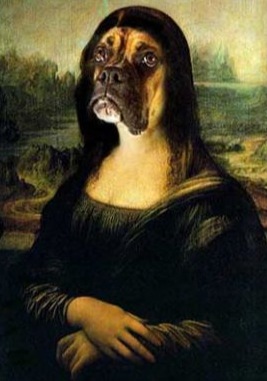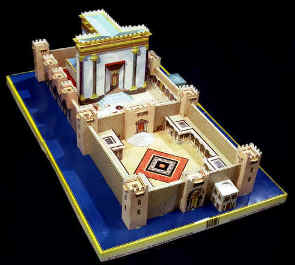Inside Dan Brown's Holy of Holies
 Just a reminder, gentle readers, that I am still interested in actual news stories about The Da Vinci Code that escape the basic news templates we have seen over and over and over. Although, I guess, if somebody out there is doing an evangelistic weekend that actually focuses on church history and art, that would be a novelty.
Just a reminder, gentle readers, that I am still interested in actual news stories about The Da Vinci Code that escape the basic news templates we have seen over and over and over. Although, I guess, if somebody out there is doing an evangelistic weekend that actually focuses on church history and art, that would be a novelty.
Anyway, the Los Angeles Times did print a feature this week that tries to offer newspaper readers a bit of a trip into a world that they do not see -- the life of the screenwriter. In "Breaking 'Code' down on the page," Charles Taylor tried to explain the challenges that Akiva Goldsman faced in taking the novel -- that many book reviewers said resembled a bad movie driven by fake cliffhangers -- and actually putting it on the screen.
Here's the key: The book actually is about the ideas in its pages and the action is, for the most part, beside the point. Dan Brown really believes this stuff, and Goldsman tried to honor that. Perhaps director Ron Howard wasn't up to the challenge? Thus, Taylor writes:
... (It) would be dishonest to pass judgment on Goldsman divorced from any knowledge of what Ron Howard did with his script. Howard is too conventional a director to bring the film the craziness and pace that it needs. (If ever there should be a lapsed Catholic behind the camera, this is the movie.)
But the slow deliberation of Goldsman's script does provide the pleasant novelty of a summer blockbuster that isn't punctuated by explosions every two minutes. There's also no escaping the kick of seeing a big-budget Hollywood movie that qualifies as an honest-to-God blasphemy.
It could be that we are officially entering a new stage of coverage, a kind of "Yes, lots of smart people (click here!) think the movie stinks, but it's cool that it's attacking the right people and the ideas in it are worth thinking about even though all of the history and art stuff is bunk."
It is also clear that many of the ideas that are in the book have been watered down in the movie, almost certainly -- as a PR man linked to Sony told me long ago -- in an attempt to make the book less offensive to Catholics and other traditional Christians. But the worldview is still there, no matter how hard Tom Hanks tries to say that it is all just a bizarre story.
So what is the heart of the story in the movie? If this is a refreshing blast of blasphemy, what is the key element of its heretical doctrine?
Most journalists have focused on the "Did Jesus get married?" angle, but a few have dug underneath that and hit larger questions. Over at USA Today, veteran religion writer Cathy Lynn Grossman sped past the plot and offered this summary: It's pro-feminist Gnosticism.
Is there really a feminine aspect to God? A theology that's been sub rosa, hidden for centuries beneath the feminine symbol of the rose, the flower reminiscent of a blossoming womb? Author Dan Brown says one reason his book is popular with women is because it confirms their sense that Christianity has kept women in secondary roles to downplay or disguise the feminine aspect of God, maintain male religious authority and stamp out rival beliefs, such as goddess cults.
Our world today is based on "outdated male philosophy," Brown said recently on New Hampshire Public Radio. So he countered with a heroine whose very name, Sophie, means wisdom. It's a salute to Gnosticism (gnosis is Greek for knowledge), a first-century sect some claim was more feminine-friendly.
 Like the Matrix movies, DVC does have a massive dose of gnosis. But, in the novel, Brown goes further than that, further back in time, and ends up in a place that, frankly, I have been stunned has not set off warning sirens in some Jewish sanctuaries.
Like the Matrix movies, DVC does have a massive dose of gnosis. But, in the novel, Brown goes further than that, further back in time, and ends up in a place that, frankly, I have been stunned has not set off warning sirens in some Jewish sanctuaries.
That was the subject of my Scripps Howard column this week. If you want to read that, click here, but here is a hint: There was more going on inside the Jewish Temple than the sacrifice of lambs. The priests and the priestesses were getting it on in there.
In the beginning, Judaism was a faith built on sacred sex.
At least, that's what Dan Brown told 60 million readers in "The Da Vinci Code," speaking though a fictional Harvard scholar named Robert Langdon. And while the characters are fictional, the novelist continues to affirm the statement that opens his book: "All descriptions of artwork, architecture, documents and secret rituals in this novel are accurate."
One of those "secret rituals" is an eye-opener.
"Langdon's Jewish students always looked flabbergasted when he told them that the early Jewish tradition involved ritualistic sex. In the temple, no less," wrote Brown, in one of many long speeches that explain his iconoclastic plot. "Early Jews believed that the Holy of Holies in Solomon's Temple housed not only God but also His powerful female equal, Shekinah. Men seeking spiritual wholeness came to the Temple to visit priestesses ... with whom they made love and experienced the divine through physical union."
So, journalists, it might not hurt to include a local Orthodox rabbi in your source list -- or a tantric sex expert -- for the next round of DVC coverage. Brown's unique Judeo-Christian Gnosticism has a sexy edge to it.